After the construction sector, infrastructure is another essential part that you will have to monitor and continuously improve to grow GDP. Your country wouldn’t be successful without it. In this particular guide, I’m going to write down everything I have learned about infrastructure so far.
Infrastructure theory:
The idea is that we look at infrastructure in a more general way. Infrastructure is calculated for each of your provinces separately and it primarily affects market access. In case the market access is less than 100%, not all raw materials (produced in a given state) may enter the overall market. Moreover, the states cannot buy as many raw materials from the overall market as it seems at first glance. This may lead to raw materials being cheaper/more expensive in a certain state. It can eventually reduce the efficiency of the factories that are built there.
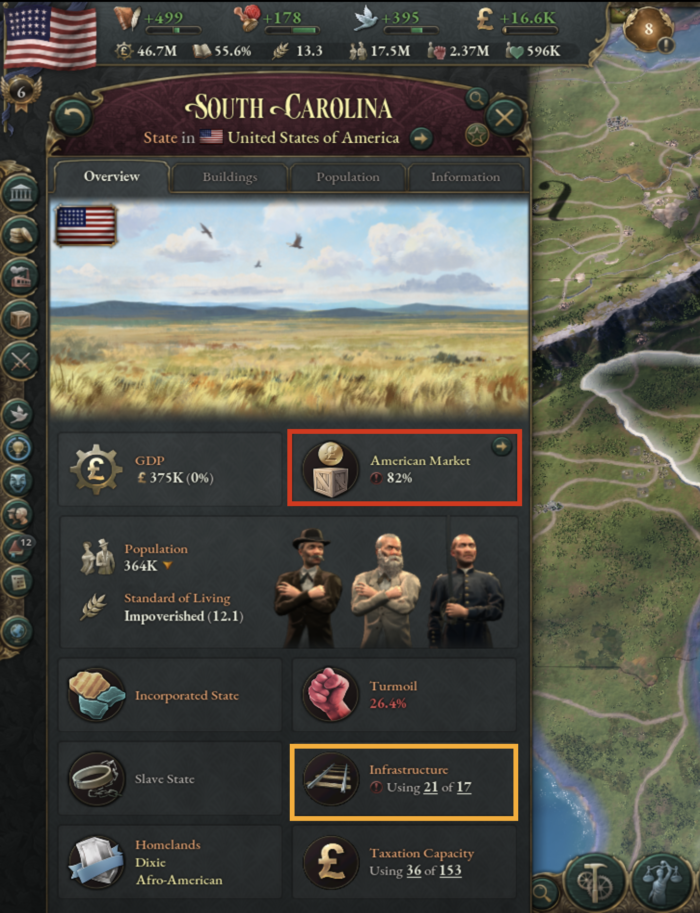
So if you have less infrastructure, it will have a negative impact on the economy of the whole province. And if you have built some special factories in the state that you don’t have elsewhere, the price of the raw materials can go up anywhere else. In the end, it will affect your whole economy.
As you can see in the picture with statistics, I built 10 cotton plantations in South Carolina. The fabric price is remarkably lower in comparison with other states.
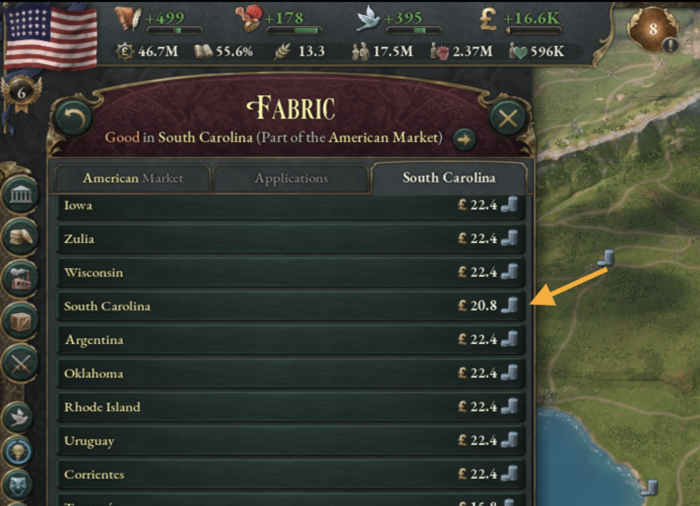
In case I would have just one country that has only some raw materials and most of the raw materials are collected elsewhere, it is not a big deal. But imagine if South Carolina was the only state where for example fabric was produced. Then it would mean that the price would be significantly higher in other states and I would have a significantly bigger economic problem.
Basic infrastructure rules:
- Always guarantee a sufficient infrastructure in every location.
- As soon as market access drops below 100%, increase the level immediately.
- Have various types of sources across multiple states.
- Before you decide for investing in development, ensure you have built infrastructure there.
- Work with infrastructure in a broader context (more below).
How to increase infrastructure?
In case you need to increase the level of infrastructure, first, you need to build either a railway or a port. Both can be built quite quickly and bring various advantages so you have to think strategically. In landlocked states, you can build a port. On the other hand in states that are inland, you have to build a railway.
However, it is not that simple. Well, in the heart of the matter it is, but as we can see with the coastal provinces, you can build both a port and a railway. This is the typical situation of “it depends”. Because of that, I’ve worked out for you the advantages that are clear to me today and that can be truly beneficial to you.
Port as a way to trade
If you need to trade across the sea with any of your partners, you will need to have enough convoys. However, these are not unlimited. The number of them can be found in “Market > Trade Routes”.
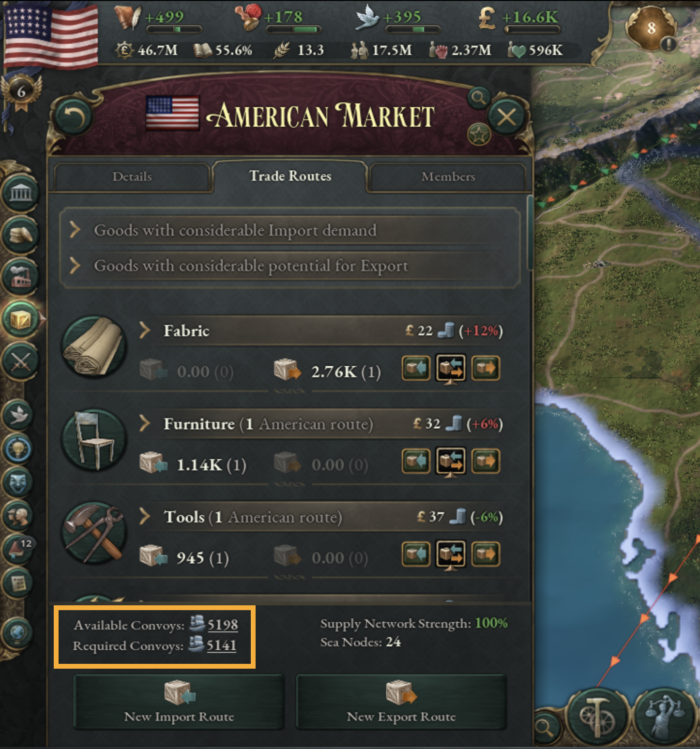
In the picture above you can see that I have 5198 convoys available and I am currently using 5141 of them in my trade routes. That means that if I want to open some more routes there I will have to get more convoys first. That is what the port will guarantee as you can see in the statistics below:
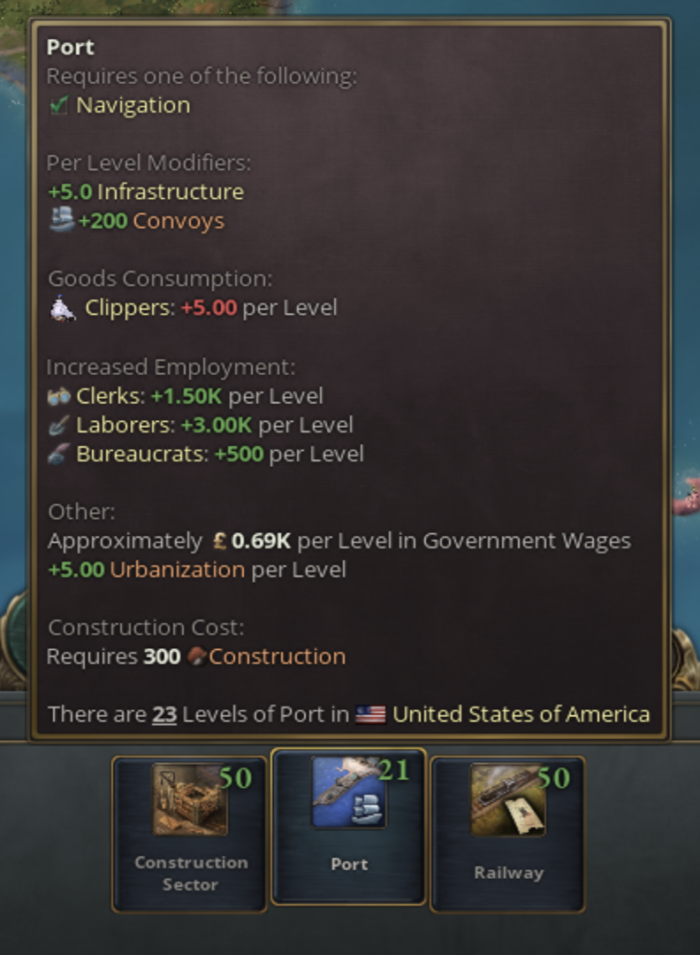
So in case I need convoys and at the same time to increase the infrastructure, it makes sense to invest in a port. You just need to be aware of the fact that you will need to provide more ⛵ Clippers. These are created in shipyards, so you can’t build 20 ports and hope that the situation will somehow resolve itself.
Rail as a way to more workers
On the other side is the railway. It has one cool bonus – the ability to generate “transportation” which is something your residents need to meet their standards of living. In case you have well-prepared/built transportation, you are on a good path. This is because it’s a cheap way to get more workers for your factories.
In the factory details, you can switch “Train Automation” to “Rail Transportation” to release 1k (per factory level) Laborers or Slaves in the province. This will potentially bring more people that are available for work to other factories.
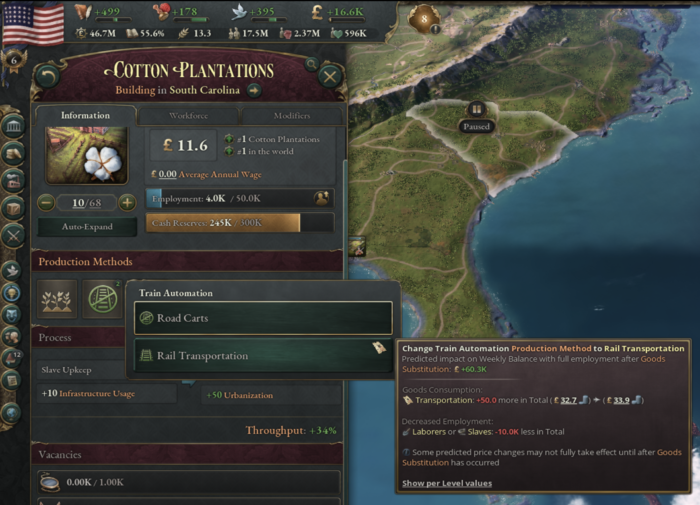
You need to make a good choice in the maritime provinces whether you want a railway or a port. Both have nice advantages and only through their combination can the economy work efficiently and your GDP grow.
More tips on how to increase GDP in Victoria 3
How to increase market access in Victoria 3?
Increase the infrastructure in your province by building a railway or a port. You can find out that one of your states is in trouble from the “Current Situation” or through the icon in the “trade lens > buildings” overview.
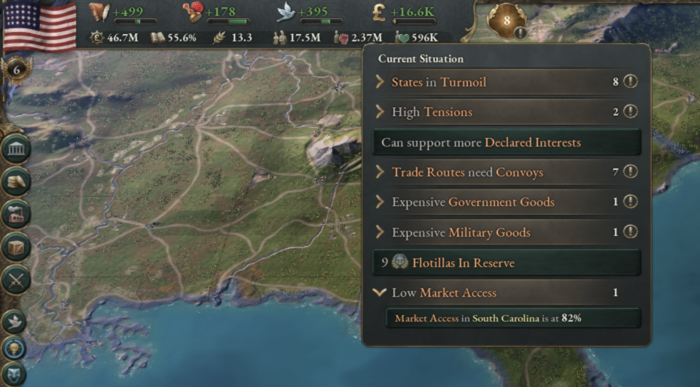
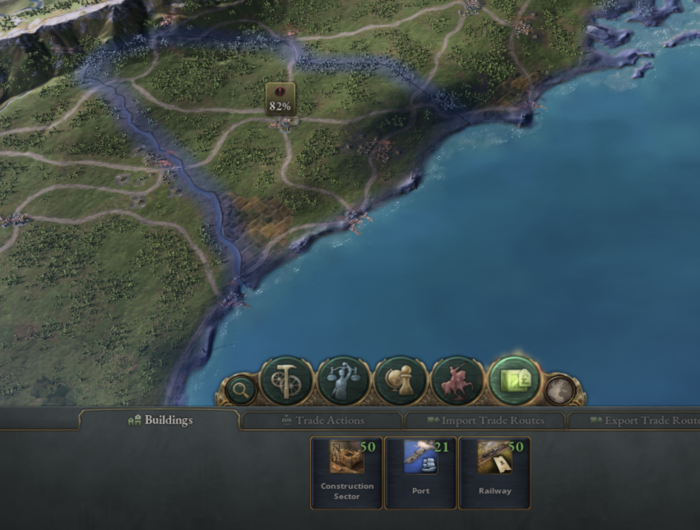
Colonization and the first infrastructure?
If you decide to colonize a country that is not connected to you by land, you will have to connect it by port. Even though some level of infrastructure may already be in place “by default” you still want to build a port in the states you colonize. By that, you can take advantage of your market.
More about colonization and how to do it effectively
Other articles about Victoria 3 that are based on real experiences:
Which countries to play first and last in Victoria 3? | Resource maps in Victoria 3 and how to use them? | How to increase GDP in Victoria 3? | All about prestige in Victoria 3 and how to increase it? | Detailed guide about standards of living | Guide about obligations | Guide about colonization | Article about construction sector in Victoria 3 | Guide about infrastructure | 💰 How to make money in Victoria 3?